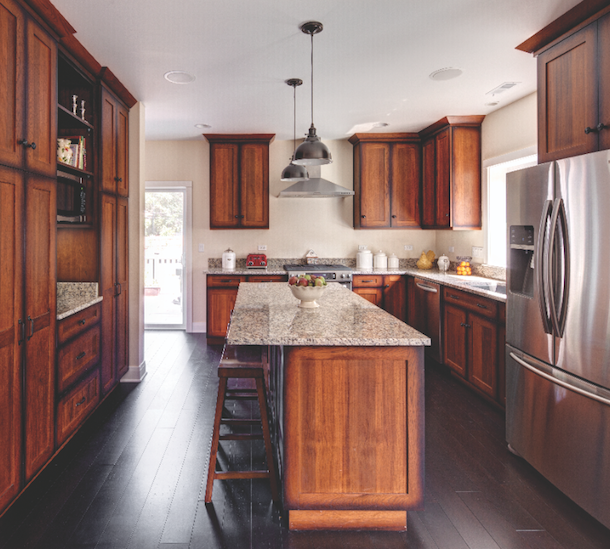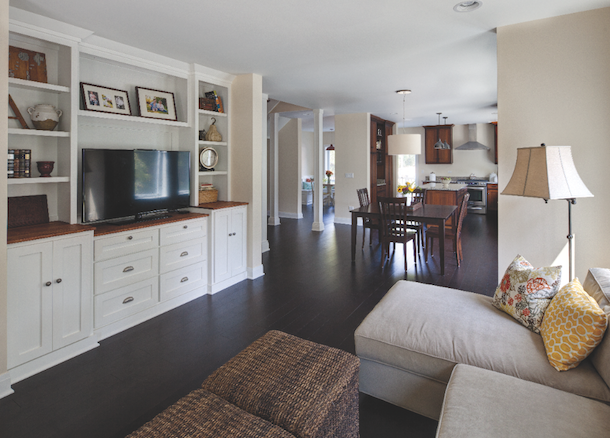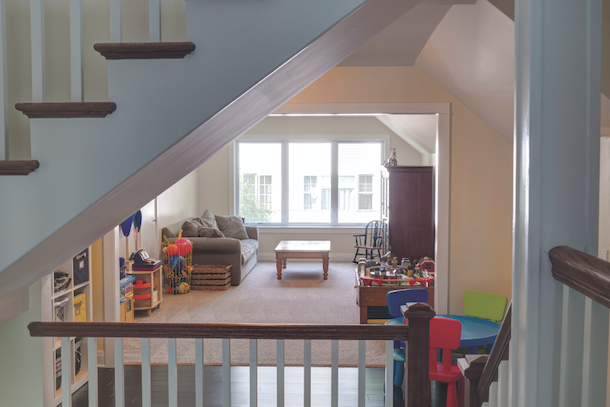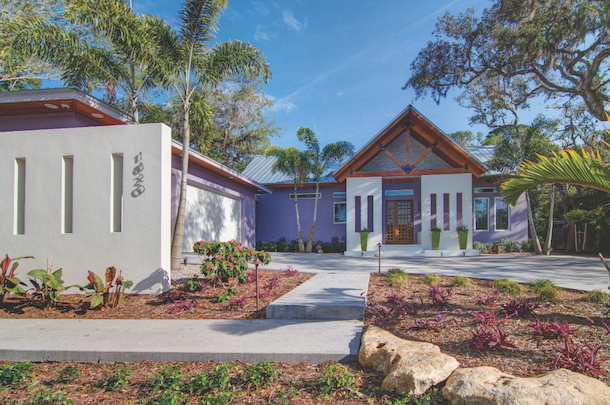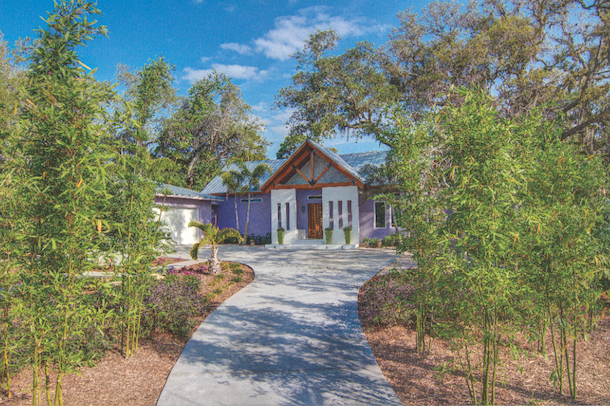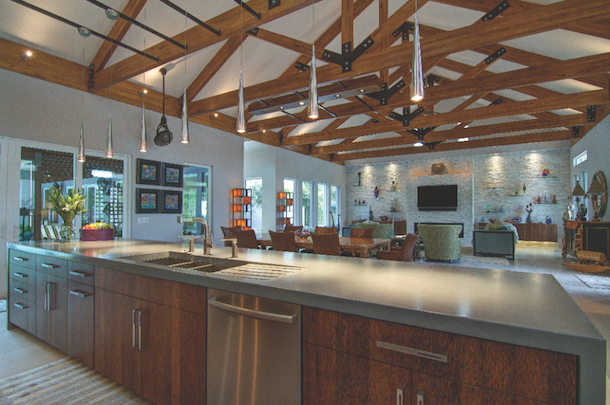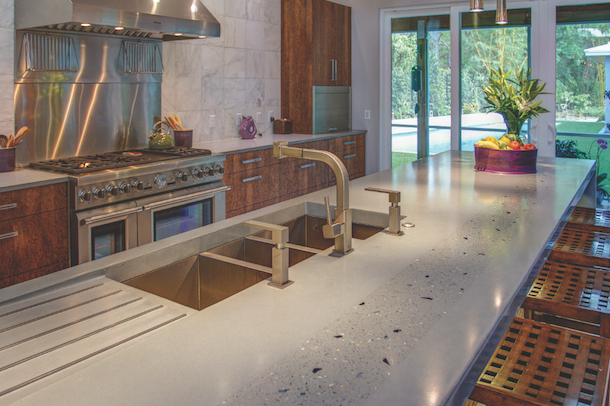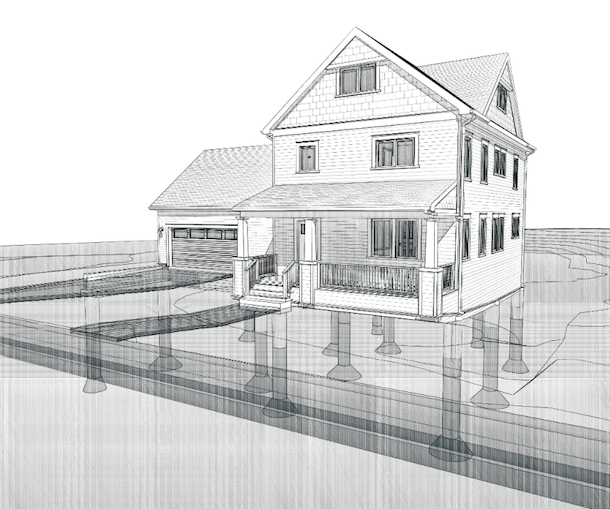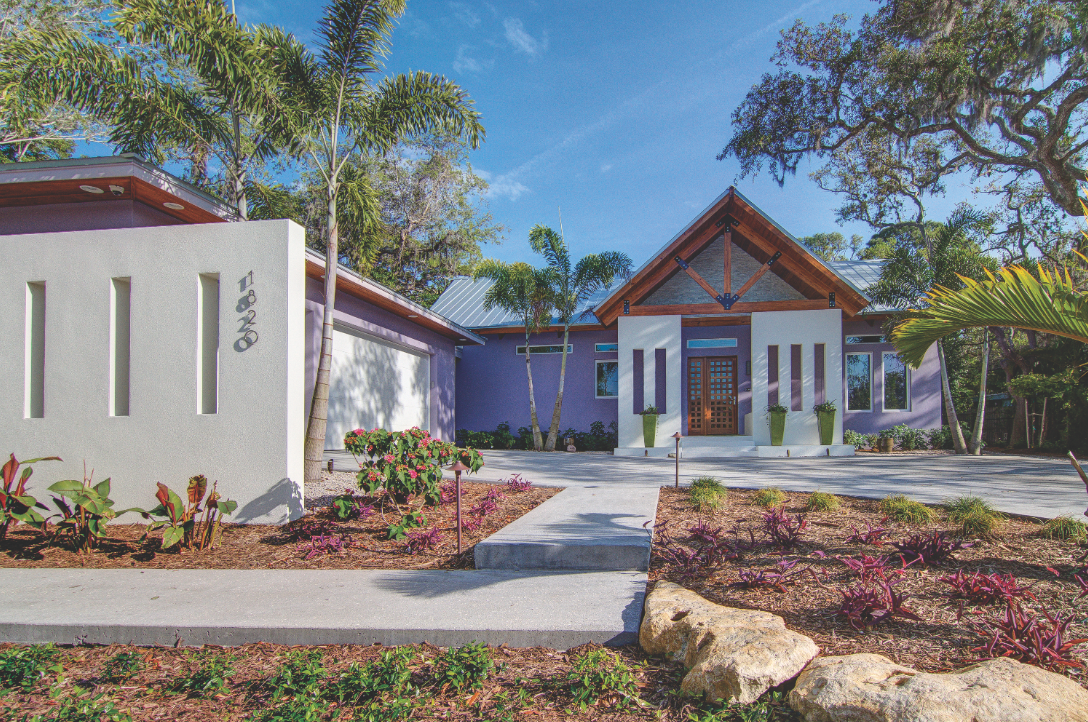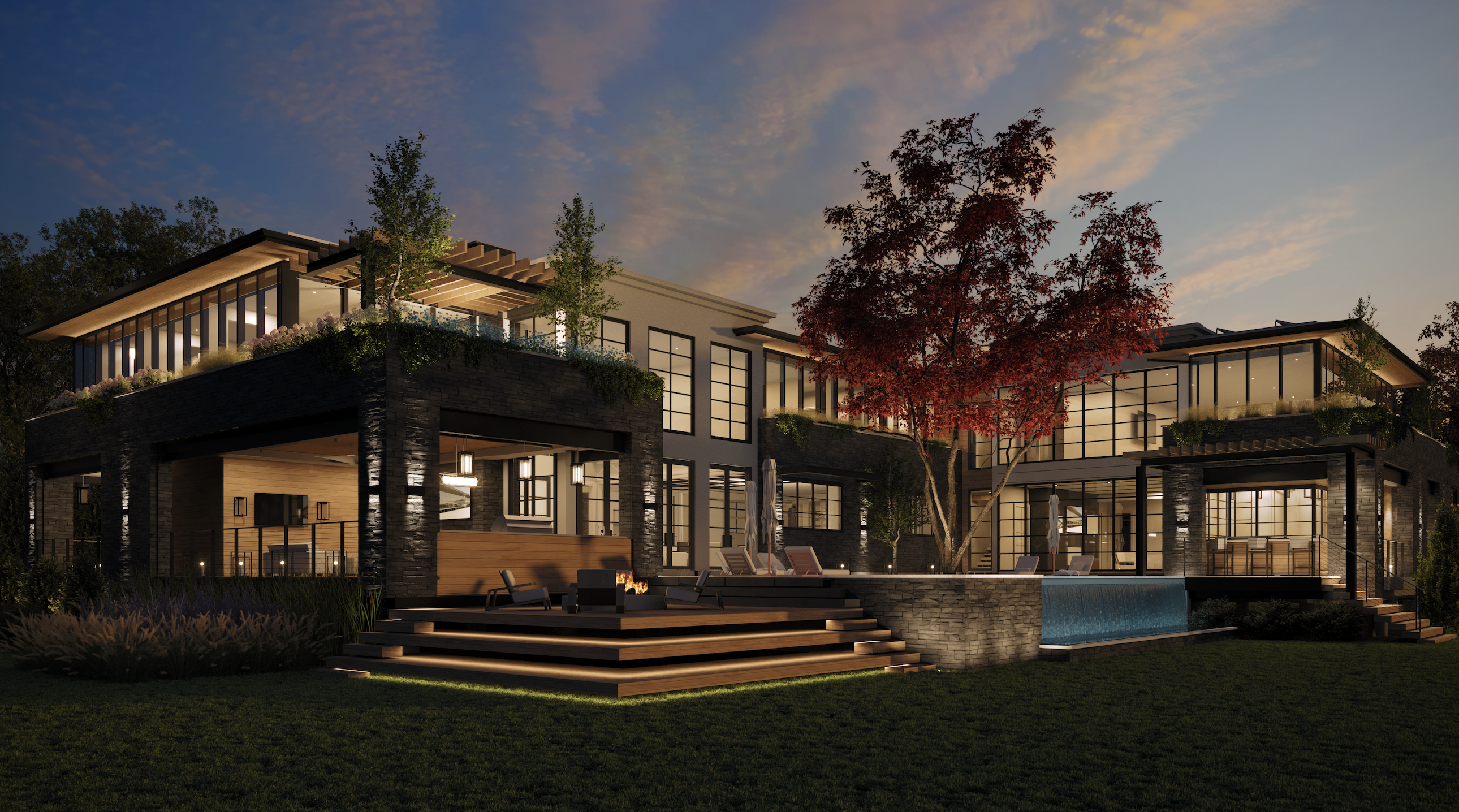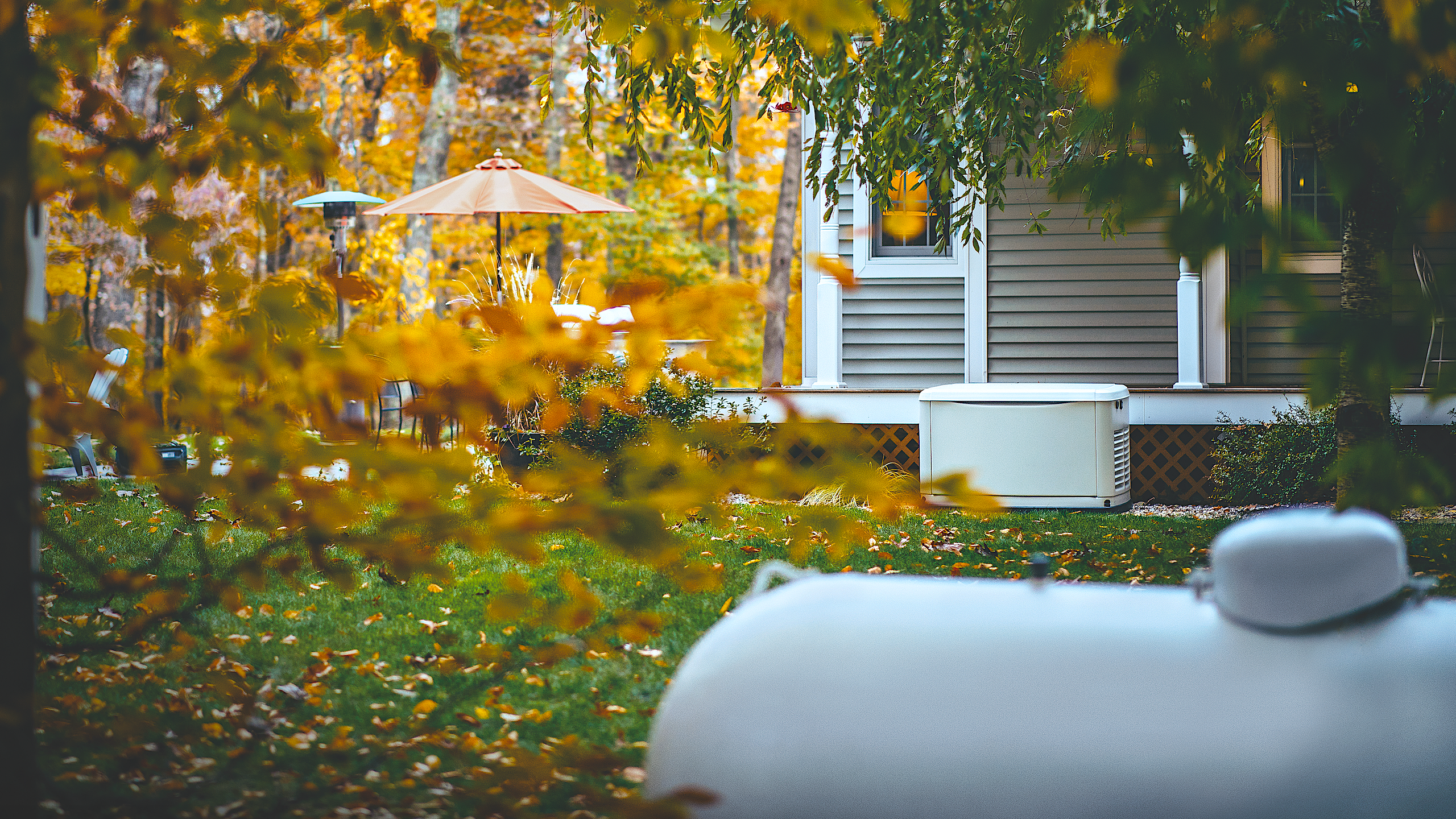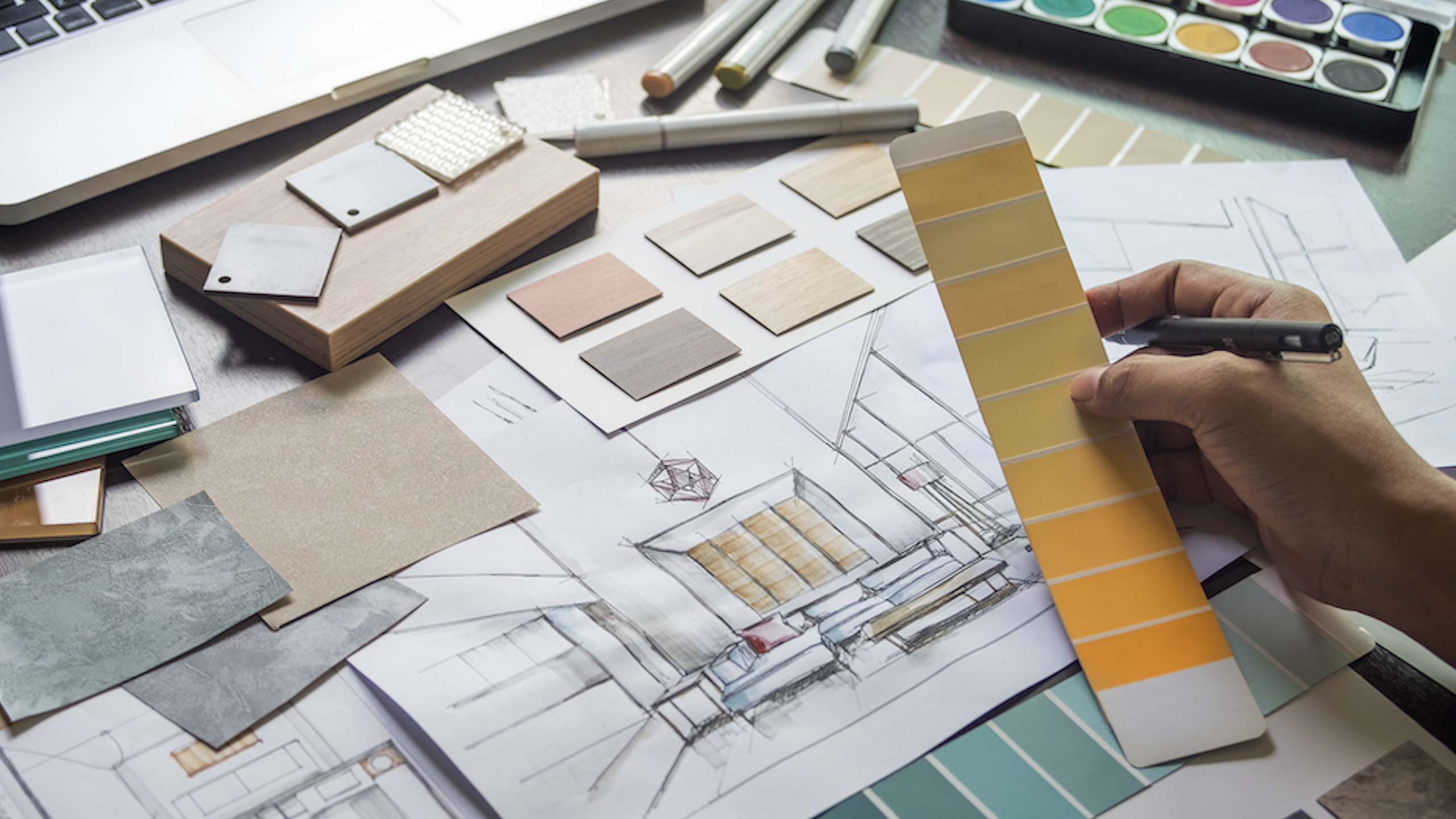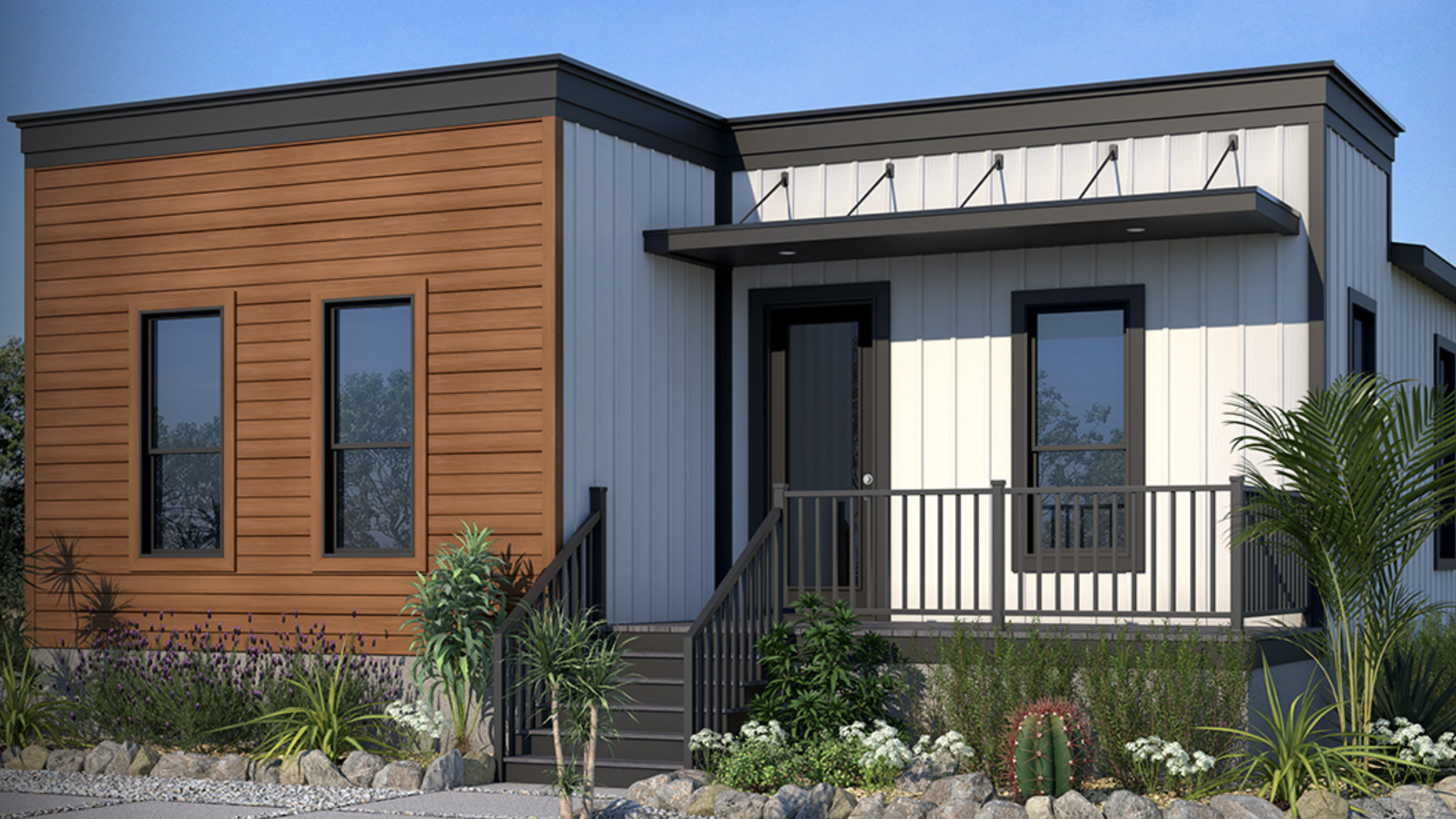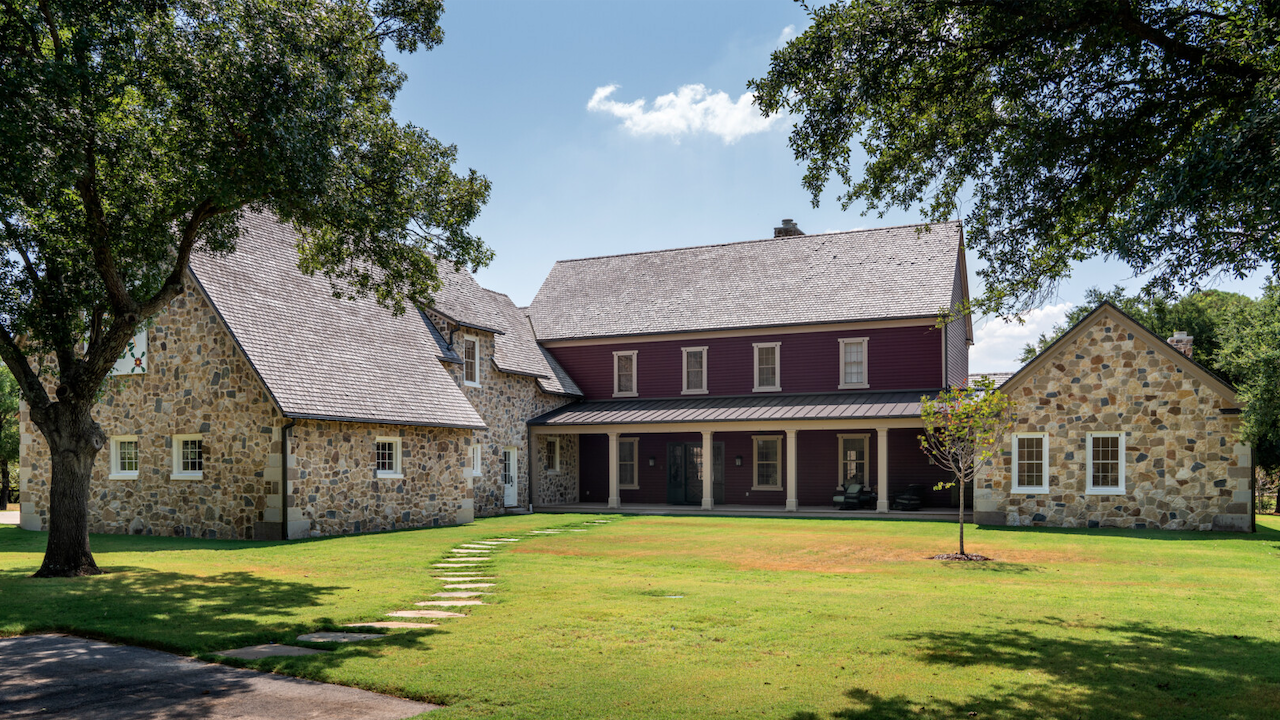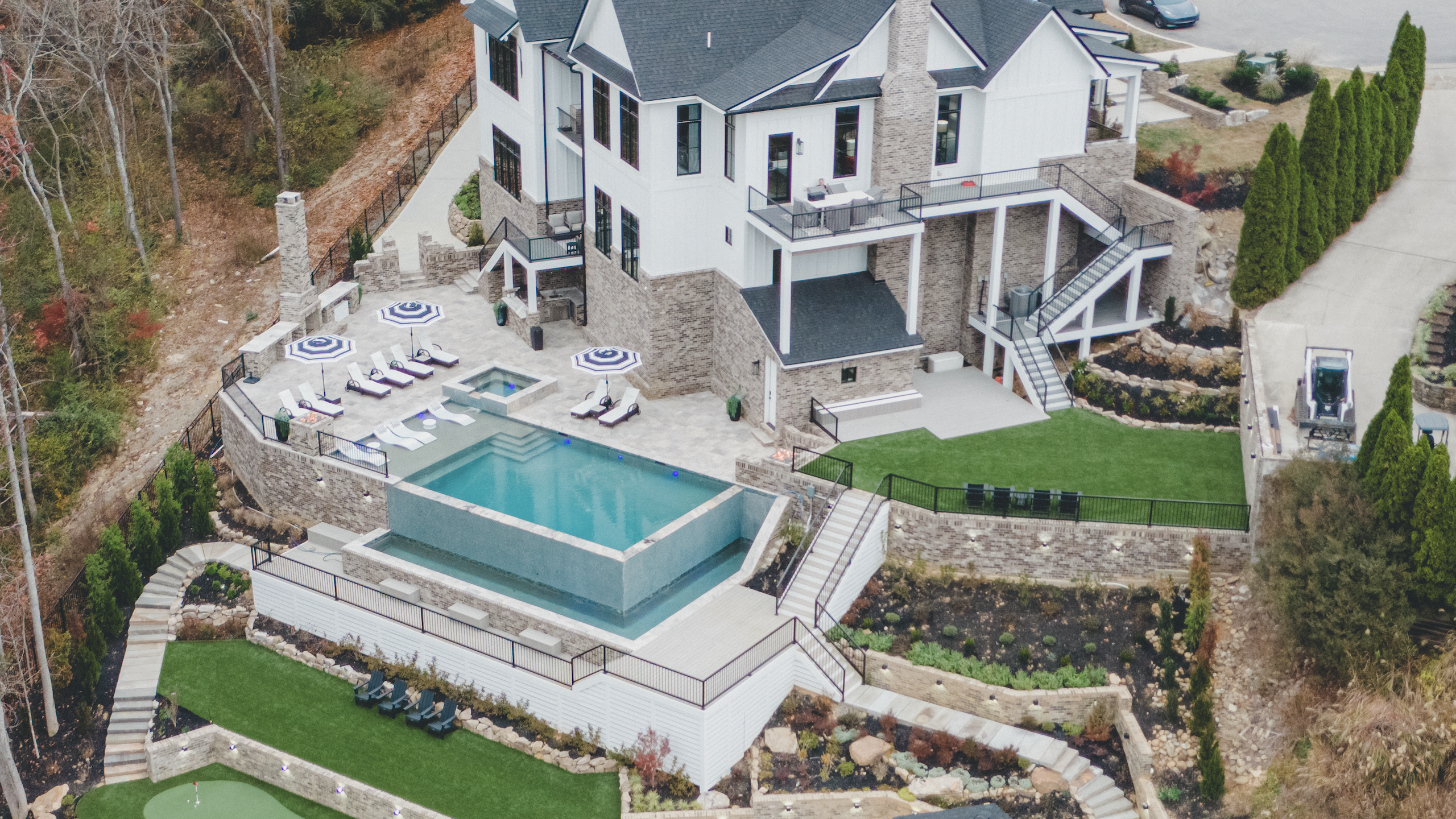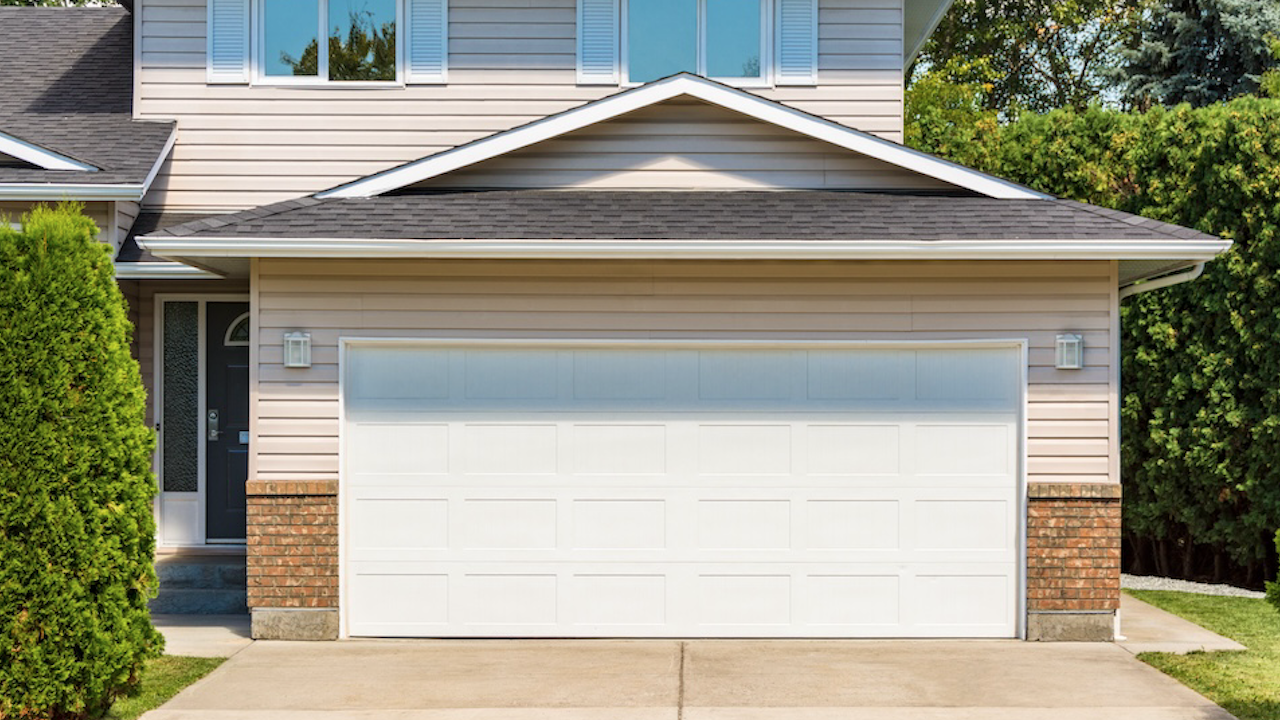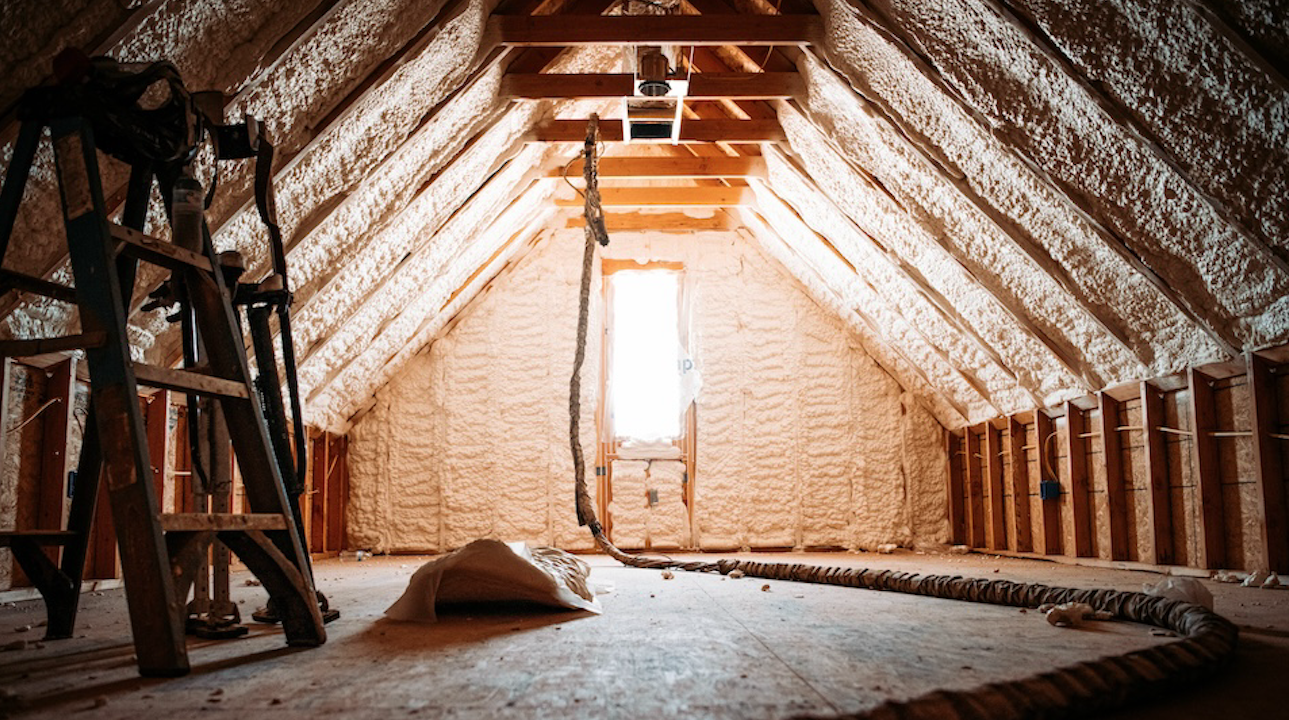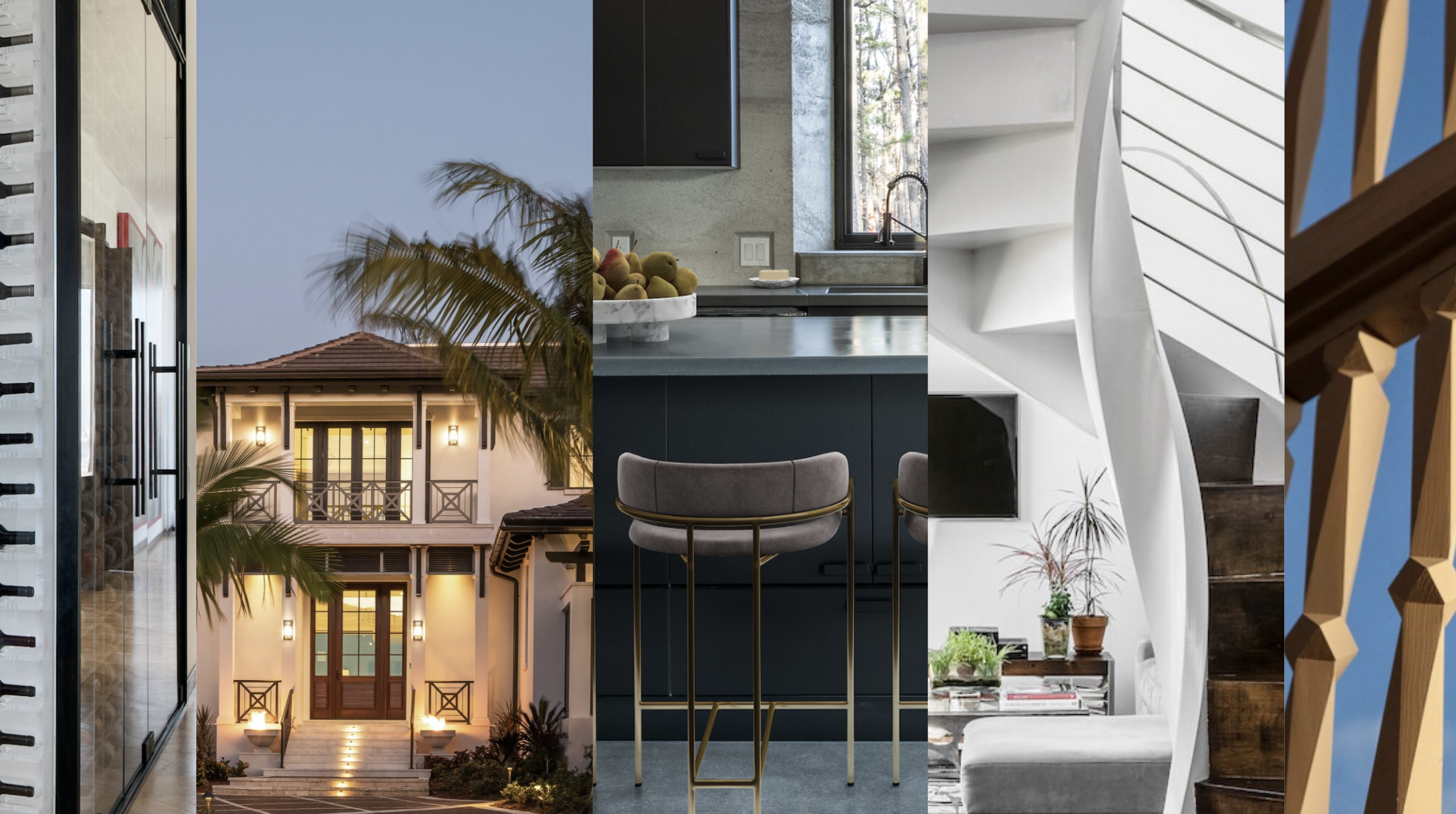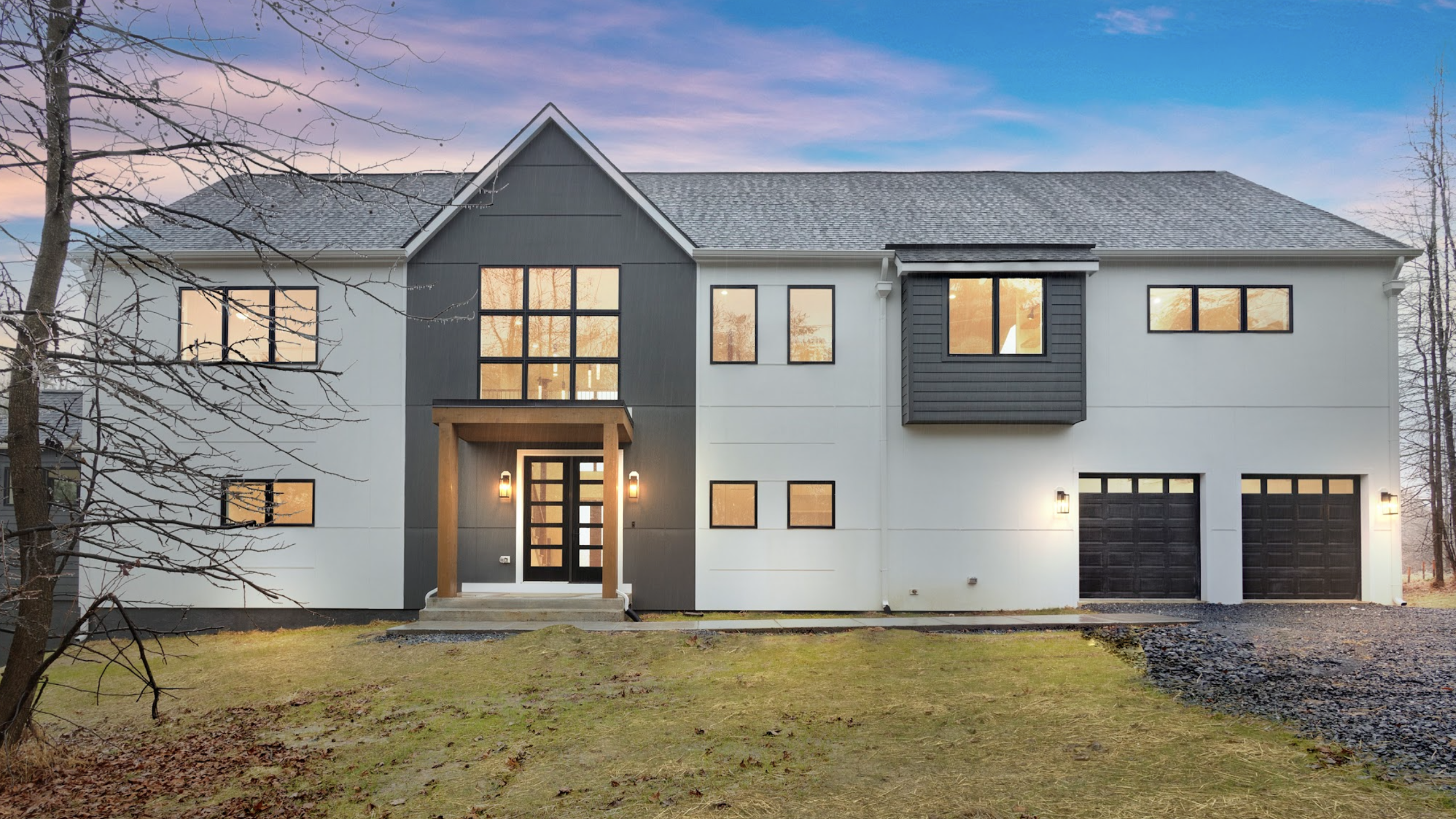Builders Brandon Weiss and Josh Wynne are masters of sustainability. Weiss Building & Development, South Elgin, Ill., has built more third-party-certified green homes than any other builder in Illinois, including the first Passive House in the Chicago area. Josh Wynne Construction, Sarasota, Fla., has built more LEED Platinum, single-family detached homes than any other builder in Florida.
Their level of commitment is evident in two custom homes that go beyond building codes to provide superior living environments with aesthetic appeal.
Equal to the challenge
The kitchen features cost-effective granite countertops and custom cabinets with slow-close, adjustable drawers and doors. The cabinets have no added urea formaldehyde and are finished with water-based, non-toxic finishes. The FSC-certified bamboo flooring is 154-percent harder than red oak and has a 10-coat finish. Photos: Eric Hausman
Weiss just added to his achievements the first DOE Challenge Home in Illinois. Challenge Home is a new program from the U.S. Department of Energy that certifies homes with a high level of energy efficiency while addressing comfort, health, quality construction, durability, and advanced technology. More rigorous than Energy Star, the program requires that homes be net-zero energy ready.
Weiss was one of the first builders to complete Challenge Home training with the DOE and decided to build one for a couple with young children. “They wanted a comfortable home that was well designed with good use of space,” he says. “They wanted room for the whole family to get together, but also retreat zones for individual family members to get away.”
Because the lot is in a low-lying area prone to flooding, the DOE Challenge Home was elevated several feet and a stormwater management system was installed. A wood skirt camouflages the elevation.
The couple had purchased a lot in the Chicago suburb of Downers Grove. Because of the high peat content in the soil, the Challenge Home had to be built on caissons (see bottom of article).
The property is also in a low-lying area with flooding issues, so Weiss elevated the house a few feet off the ground. “This is common in coastal areas, but not so much in the middle of a suburban downtown area,” Weiss comments. An extensive underground stormwater system was installed.
The clients wanted an open living room, dining room, and kitchen arrangement with no wasted space. Weiss specified CertainTeed AirRenew drywall, which absorbs VOCs and formaldehydes and sanitizes the air in the event that furnishings with those toxins are brought in.
To maximize natural light, Oak Park, Ill., architect Tom Bassett-Dilley shifted the house as far to the north as possible on the lot, “so we had good glazing for passive solar gain on the south wall. We basically stretched the house out along the east-west axis. The garage goes off on kind of a ‘T’ to the north, so it’s on the shady side of the house.” The home was pulled relatively close to the street to make the most of backyard space.
Even with its 24-by-36 footprint, the home has 3,600 square feet spread out over three levels. Since a basement wasn’t feasible, Bassett-Dilley created a playroom for the children above the garage. “That was a trick, because a garage has bad air quality and it’s not heated,” he says. There’s a “nice flow” to the interior spaces, he says, with the living room, dining room, and kitchen on the first floor, bedrooms on the second floor, and a home office on the third floor.
To make the spatial flow more interesting, architect Tom Bassett-Dilley designed the staircase so that family members can access the playroom above the garage or keep climbing to the second-floor bedrooms or third-floor home office.
Part of the south-facing roof is roughed in for solar PV panels, which the clients can install later on.
Weiss completed the home for less than $135 per square foot, proving that green homes do not have to cost more than code-built homes. “We didn’t do a basement, so we didn’t have the expense of a big excavation and foundation wall system,” he says.
Space over the garage was turned into a playroom for the children. “It wound up being a big, usable space halfway between the first and second floors,” Bassett-Dilley says.
Moreover, by taking a design/build approach, Weiss and Bassett-Dilley were able to maximize the efficiency of building materials. Using dimensional lumber helped reduce waste. The savings were allocated to extra foam insulation on the exterior and in the walls as well as more attention to air sealing, which enabled Weiss to downsize the HVAC system.
Third-party-certified materials, such as GreenGuard Gold-specified products, were used to ensure improved indoor-air quality. The home has a HERS score of 35.
In July, four homes by Weiss Building & Development will be featured in Chicago’s annual Greenbuilt Home Tour.
A pearl in the oyster
The Pearl was influenced by South Pacific-style architecture, with its series of individual spaces connected by outdoor walkways, but the façade reflects Florida vernacular. Photos: Ryan Gamma
Josh Wynne doesn’t care for the term “green building.”
“Points and scores do little to tell the story,” Wynne says. “Sustainability can be the material used to bind and elevate design when it is considered in every idea. Sustainable practice makes every good thing better.”
Stands of bamboo flank the driveway leading up to The Pearl’s tucked-away front door.
The Pearl, a home he designed and built in Sarasota’s eclectic Oyster Bay neighborhood, is a thing of beauty and highly sustainable. It’s certified under Energy Star, LEED for Homes Platinum, Florida Green Building Coalition Platinum, Florida Water Star Gold, and Florida Yards and Neighborhoods. The 4,000-square-foot residence fits seamlessly into Oyster Bay, where mid-century ranches mingle with Mediterranean Revival and Key West-inspired homes as well as Sarasota School of Architecture masterpieces.
The project started with Wynne advising his clients about a conceptual design for a pie-shaped piece of property that is 300-feet deep, with just over 100 feet of width on a radius frontage and less than 50-feet wide at the rear. The extreme lot depth and relatively narrow width was further complicated by zoning requirements that mandated a deep front setback.
The home gets its name from a private bamboo garden with circular features such as the wood patio and sodded outdoor room—“a hidden gem,” says builder/designer Josh Wynne.
“Another issue was lot elevation. Being a coastal community, we typically deal with how to create additional elevation to help with drainage issues and/or FEMA flood-plain requirements,” he says. “This site, however, was actually too tall. The elevation at the front setback was more than 9 feet above the edge of the road, which created a water-runoff management issue as well as a site-access issue.”
These challenges became the primary driver of Wynne’s design. He created a long, narrow home with the western exposure tucked beneath old-growth oak trees that provide afternoon shade. The shallow width allows for passive ventilation, utilizing predominantly western breezes. The eastern lot-line became a courtyard with a pool. All of the common areas and the master suite flank the courtyard, which is rimmed with a large, covered outdoor space.
Ample windows and sliding patio doors allow for a visually seamless transition between the home and the lanai, the gardens, the courtyard, and the pool area.
The clients are retired empty nesters with family in the area, including grandchildren. They enjoy entertaining and required a large, open great room where they could comfortably host catered parties with as many as 50 guests. Since privacy was also a concern, Wynne’s approach layers the public, semi-private, and private spaces.
“The front lot-line has an almost public-park feeling,” he says. “Moving through the paths leading to the front door gives the feeling that you are on a nature trail. The front door is tucked in and definitely a private space; however, once you enter you find yourself in the great room with a large kitchen on one side and the living space on the other. This is the public area.”
The great room has soaring ceilings supported by massive timber-framed trusses. “It’s the first time I’ve used pine and cypress to build glulam beams for the exposed trusses,” Wynne says. “We custom-fabricated the truss brackets and then built matching metal wire chases and metal-and-wood light fixtures that match the brackets and beams.” The TV wall is 100-percent quartz stacked ledgestone (also used on the entry gable and the elevated pool wall). Its thickness and rigidity was used to cantilever the glass shelves, which can support more than 150 pounds each.
The entry is aligned with a long hallway adjacent to the gardens and courtyards. The pool and powder bath is accessible here, as is the guest wing and outdoor living room. This is the semi-private space, Wynne says.
At the rear of the home is the master suite—the most private indoor space. But the most private space of all is the bamboo garden in the backyard, which features a series of circular elements including a sodded outdoor room and a wood patio. “The transition from the front of the property to the rear leaves the clients and visitors feeling as if they’ve found a hidden gem,” he says. “Hence the project name, The Pearl.”
The kitchen island’s countertop is made of a single piece of glass-fiber reinforced concrete that is 16-feet long and 42-inches wide, with a 2-1/2-inch-thick waterfall edge. Coconut Palm Wood by Plyboo was used in a basket-weave pattern on the face of the island as well as the cabinets to evoke Florida and the South Pacific.
The Pearl is reminiscent of South Pacific architecture, such as Polynesian- and Balinese-style homes where spaces are connected by outdoor walkways. The clients’ extensive collection of Asian art and furnishings also helped drive the aesthetic design. But rather than do a theme home, Wynne embraced Asian and South Pacific influences while creating a simple Florida façade and incorporating Florida Cracker influences in the finish techniques and materials.
Regarding the home’s LEED Platinum certification, Wynne notes that it was achieved without solar PV panels, a rainwater cistern, or a graywater collection system. “It was all through smart design and intelligent use of materials and lot placement.”
Caissons Anchor Challenge Home
Caisson foundations are more common in Chicago high-rises than suburban homes. Nevertheless, Weiss Building & Development had to build one for the DOE Challenge Home in Downers Grove, Ill.
“There was about 30 feet of peat on the site before you hit stable soil,” Brandon Weiss says. “So we built the house on caissons with bell bottoms and steel-reinforced rebar.” A drill-rig dug holes 35-feet down through the spongy peat, and the caissons were dropped in with a crane.
Due to high peat content in the soil, builder Brandon Weiss couldn’t do a conventional foundation. Instead, he used steel-and-concrete caissons to anchor the home. Illustration: Tom Bassett-Dilley Architect
He met the clients’ modest budget despite having to utilize this expensive type of foundation. Weiss worked with architect Tom Bassett-Dilley and Chicago-based structural engineering firm Goodfriend Magruder Structure to determine the number and optimum spacing of the caissons.
“The farther apart we spaced them, the bigger the beam between the caissons needed to be,” Bassett-Dilley says. “Then we had to decide if we should span along the 24-foot side of the home or the 36-foot side.”
Typically, caissons are made of concrete and connected with a concrete beam, which requires a lot of formwork and expense. The steel content in these caissons made them more cost-effective. The design/build team developed thermal-break details to prevent the floor of the house from feeling cold due to all the steel and concrete below it. CB
